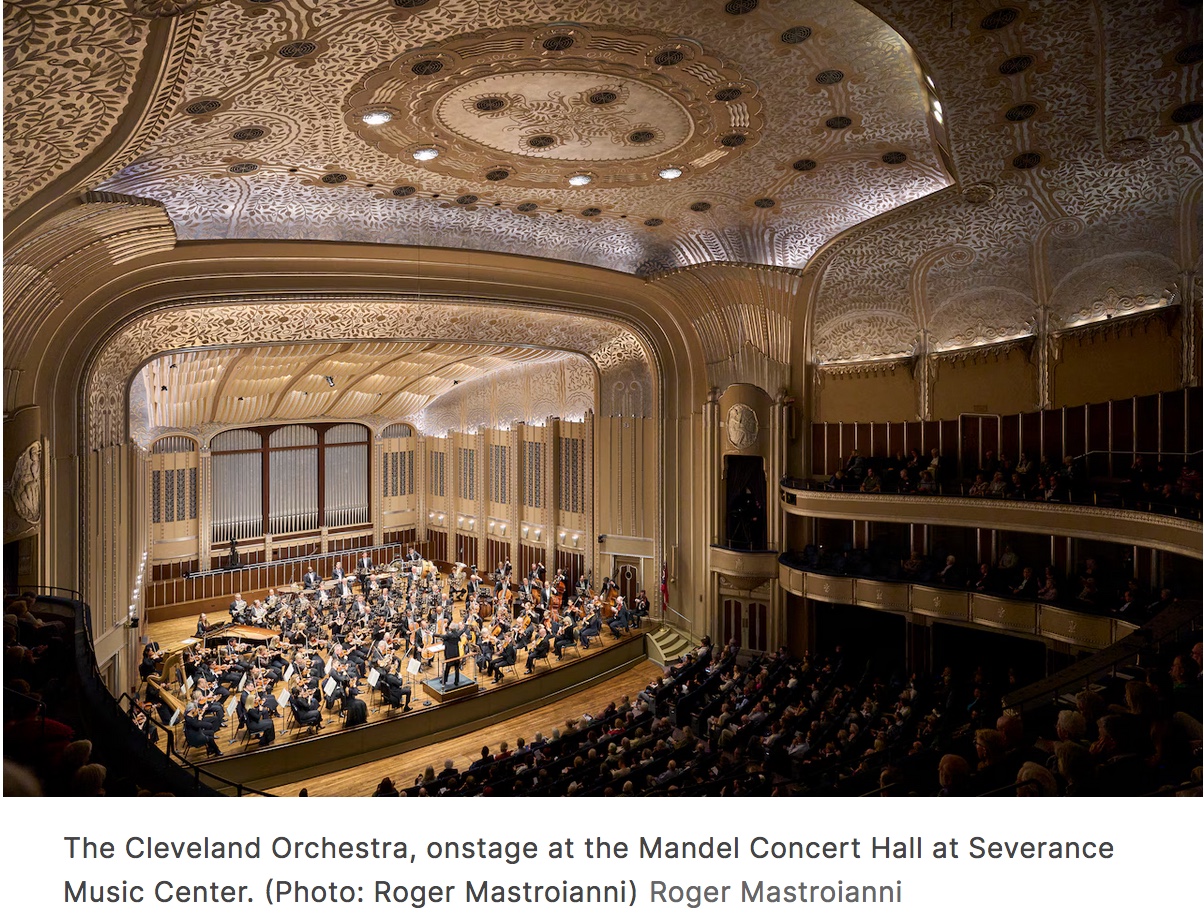by Stephanie Manning

CLEVELAND, Ohio — Eighty years after his death, the ghost of Robert Schumann helped unearth his own violin concerto. Or at least that’s how the story goes.
Whether or not you believe that the composer actually spoke to violinist Jelly d’Arányi via ouija board, that incident ultimately led to the works’s rediscovery in the 1930s. And on September 19 at Severance Music Center, The Cleveland Orchestra treated its first audience of the season with a rare opportunity to hear it.
But before that, Prokofiev. Although the specter of death loomed over the rest of Thursday’s program, Sergei Prokofiev’s breezy Symphony No. 1 kicked things off with a burst of youthful energy. Conductor Osmo Vänskä kept everything animated, encouraging a light and bouncy quality from the musicians.
Vänskä, appearing with the Orchestra on short notice after Franz Welser-Möst’s withdrawal, may not have been as familiar with the Schumann as soloist Frank Peter Zimmerman. But both leapt eagerly into this intriguing work.
The outer movements often convey a liveliness comparable to the Prokofiev, and Zimmerman’s clear tone easily cut through the texture. But the circumstances of the concerto — written during a period of Schumann’s declining mental state — still cast a shadow. Violinist Joseph Joachim, the work’s dedicatee, never performed it out of concern for its musical quality.
True, this is not Schumann at his most polished — there are moments where his mind wanders, as well as some excessive repetition. Yet Zimmerman was able to bring out the music’s hidden luster, particularly in the plaintive second movement where the composer’s inner turmoil is most apparent.
Perhaps as a way to burn off excess adrenaline, Zimmerman then launched into a surprisingly ferocious account of Schubert’s Der Erlkönig as an encore, following it up unnecessarily with J.S. Bach’s “Sarabande” from Partita No. 1.
Although the Prokofiev Symphony bears the subtitle “Classical,” Pyotr Ilyich Tchaikovsky’s Symphony No. 6 is also a classic in its own way, having been a staple in the orchestral repertoire since its premiere.
Back on more familiar ground, conductor and musicians turned the energy up, keeping the tempos brisk throughout. The waltz-like second movement sounded especially buoyant, and the brass were eager to jump back into the fray after having little to do all evening.
As the thrilling third movement built and built, with Vänskä bounding in excitement, so too did the audience’s temptation to applaud. The conductor clearly sensed this, and smartly left not even a second of space between the third and fourth movements, stymying the well-deserved cheers until the end.
The finale’s famous fade into nothingness hits even harder given that Tchaikovsky passed just days after the work’s premiere. But as the Sixth Symphony’s enduring popularity and the Schumann concerto’s ghostly rediscovery remind us: when it comes to a composer’s legacy, death need not have the last word.
Stephanie Manning trained as a bassoonist before becoming a correspondent for ClevelandClassical.com. As a freelancer, her writing has also appeared in The Montreal Gazette, CBC Montreal, and Early Music America.
Published on ClevelandClassical.com September 25, 2024
Click here for printable copy of this article



